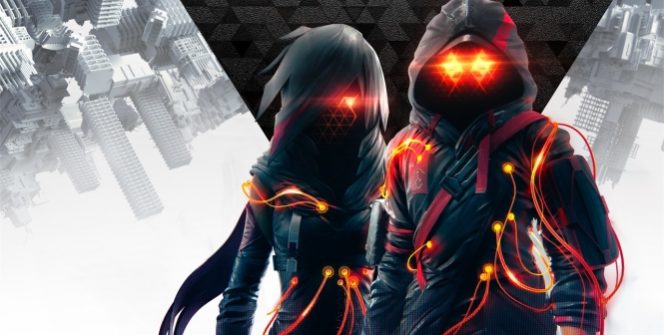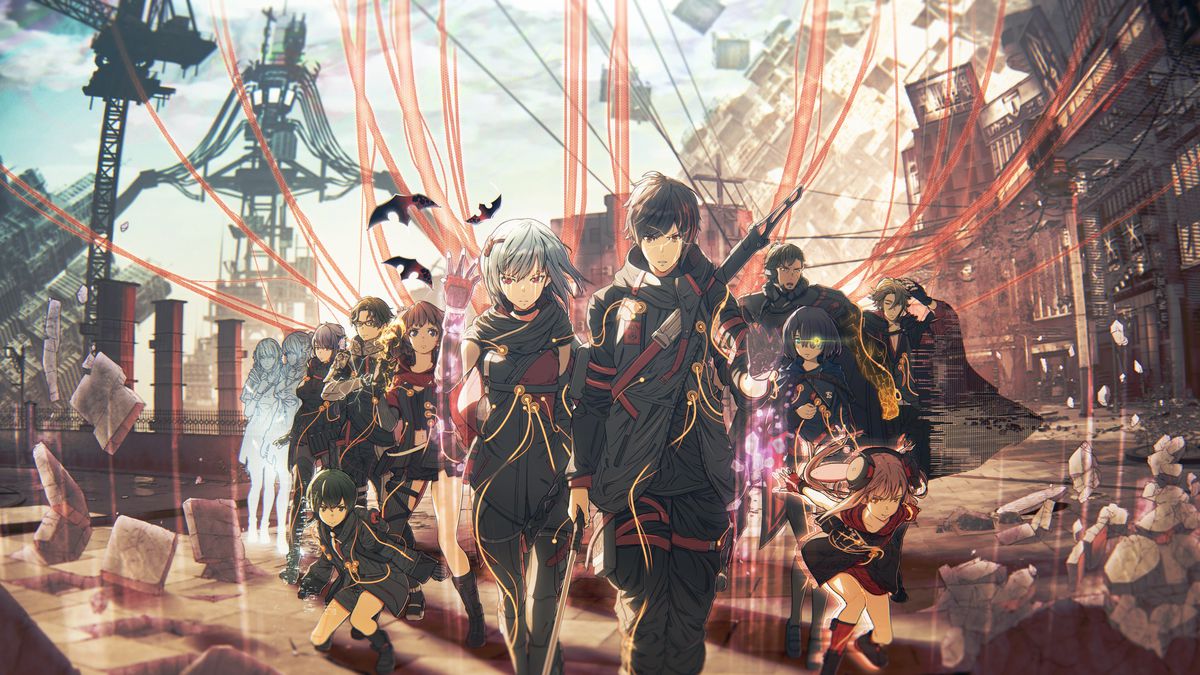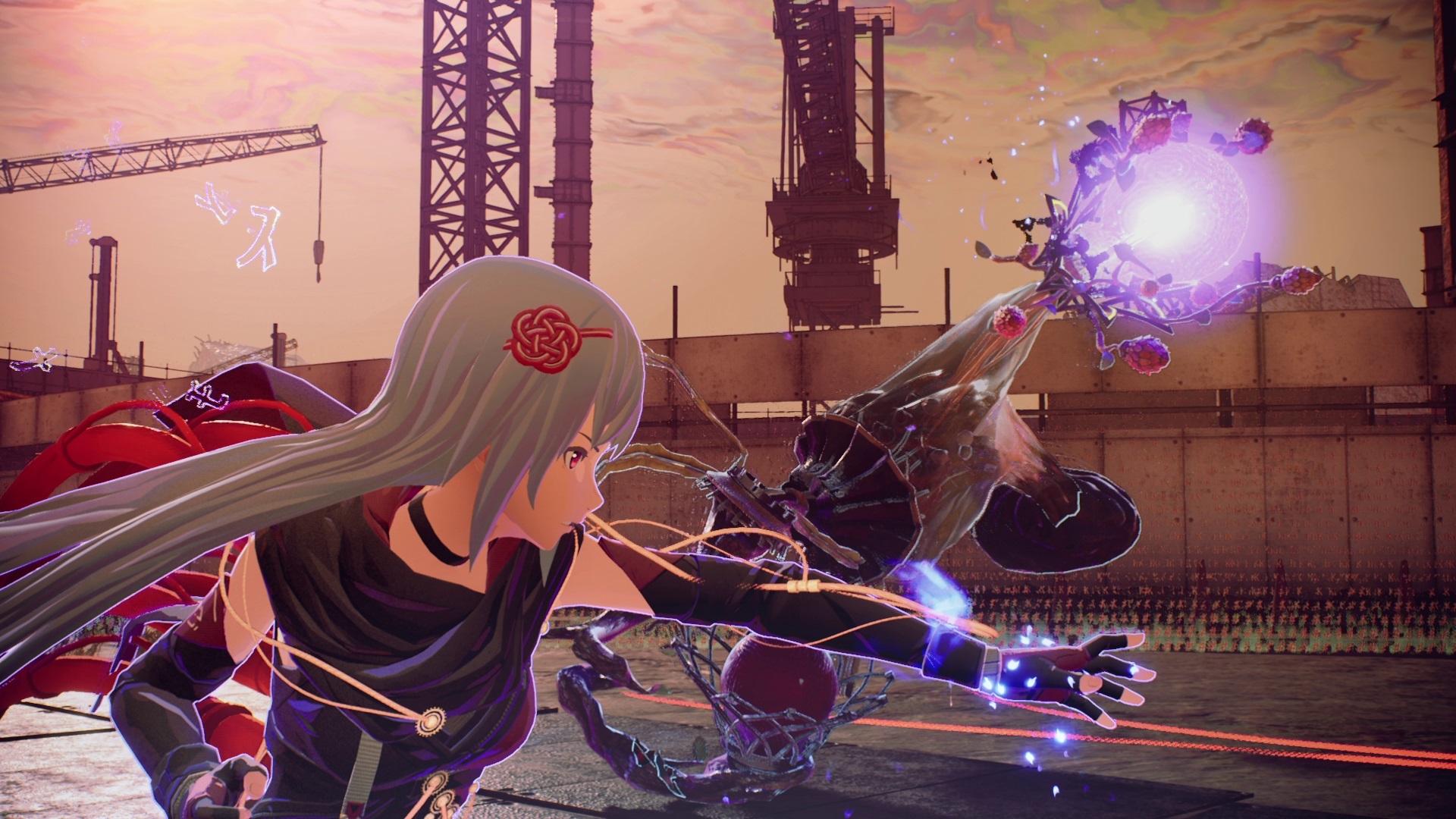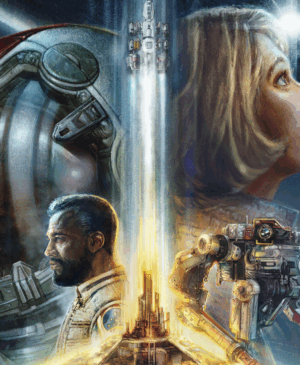REVIEW – Out of nowhere, Scarlet Nexus is one of those projects that surprised me. Its convoluted, but well-woven story joins some very well-designed combat. We tell you all the details of the latest work by Bandai Namco in the Scarlet Nexus review.
You have to admire the complexity of the new Bandai Namco production in many of its aspects. For all these scarlet threads to thread perfectly, you have to do a pre-production job where everything fits together at the risk of something going wrong. And many things could have failed, because Scarlet Nexus tries to juggle with so many balls that it is complicated: an action game with highly spectacular combat and a good story that has made the brave decision to know that, despite being an action game With RPG overtones, it is too long and complex to be told with cutscenes alone.
Visual novel a la Scarlet Nexus
One of the strengths of Scarlet Nexus is that the game benefits from its approach to the visual novel. In one of the best uses of vignettes that I have seen, well animated, planned and varied, the game manages to tell a complex and convoluted story. Yes, he drinks from many tropes of animation and makes a good hodgepodge of cyberpunk (or brainpunk as he likes to define himself) and more traditional science fiction, but he always manages to keep the interest based on one mystery after another.
As Yuito Sumeragi or Kasane Randall we will begin by joining the OSF to fight against the Alters, strange monsters that fall from the sky due to an atmospheric phenomenon called the Belt of Extinction. The city even has weather forecasts to know when they fall and be alert. The game makes many, many promises: about the Alters, the city of New Himuka itself, the OSF and ourselves, as well as the rest of our peers. A titanic task that is responsible for answering all questions in a quite satisfactory way. Above all, because the rules that the game creates, both those of psionic powers and brain connections of our group, such as those that I cannot comment on due to spoilers, are always consistent at all times, taking into account every little detail of their world so as not to break continuity.
Come on, I’ve come across one of those world buildings where it’s worth diving into and answering every question, as well as discovering twist, twist, after a twist of the script that the game never stops throwing at you. And even though Scarlet Nexus is more interested in exploring the more imaginative fantasy rather than a somewhat more mature narrative, it knows how to explore certain themes with elegance when it must, such as the neural connections that occur between people capable of perceiving what others think, the class inequalities of those who do not have powers or the maturity of those who have seen their ageing altered.
Use your brain, but also your fingers
If the story has convinced me, combat has done it as much or more. Bet on a hack and slash that does not pretend to be as technical as the references, but that is not at all brainless. With psychokinetic powers, we can throw objects at enemies in addition to using our main weapon. But that’s just the beginning: what seemed like a good way to liven things up with the SAS system, the neural connection with team members, becomes a vast, complex, and strategic system. Each member of our squad has a role. For example, Hanabi can use pyrokinesis, while Tsugumi is capable of revealing hidden enemies. Gemma is our shield and Luka lends us his teleportation power.
Again, the game takes into account each power of each ally both playable and narrative, adding depth to the characters’ pasts and their relationship to their unique power. But in combat, it manages not to become a button smash thanks to the fact that every enemy weakness can be exploited if we find out which power is more effective. A few barrels of oil to levitate and the power of fire is a good combination, while fast enemies are surprised by teleportation, for example. It works because, in the frenzy of combat, your head is always judging which is the best tactical move; something similar to what happens in other great combat systems such as Hades or Final Fantasy VII Remake, in which, although we press the attack button quickly, we are thinking about the following strategy.
Always something new
The good thing about this combat is that, although it lays the foundations and does not reinvent itself, it is always unlocking new functions, with special attacks and brain states that unleash all the psionic power. But I have said it before and I repeat it: highly spectacular is an understatement. I’m not sure which team of animators Bandai Namco has teamed up with, but between what I’ve seen of Tales of Arise and this Scarlet Nexus come together some of the best animations that have paraded across my screen recently. The work is not only brilliant, but it abounds: each Alter has its execution and the number of attacks of all the characters is brutal and very careful.
What is less achieved in combat, perhaps, is its RPG part. The brain map is fine: a typical skill tree that unlocks useful moves and passives to give a sense of progress and customize the style somewhat. But the equipment and inventory system is very little worked. The store is a menu in the save point with very few weapons that only increase statistics and some power-ups to carry as accessories. A good opportunity to manage each character is lost, and not only to regain a greater sense of progress but to liven up what is, in my opinion, the weakest point of the game: the design of scenarios.
Both in the city areas and in the “dungeons”, it seems a very simple design. It is not about whether it is linear or not, it is that the game does not manage to draw intricate maps in which you want to get lost and find all its secrets. Mainly because of what I mentioned earlier: the inventory system is simple and full of useless items, rather than interesting gear to discover; but also for some secondary missions that are yet to be completed. They remind me a lot of those in Xenoblade Chronicles, for example, asking you to kill specific Alters or under certain conditions; collect some objects; and where you do not have to return to the NPC in question to complete it, but can be marked from the menu screen.
Classic references
It will not help us more than to go through the same dungeons several times, something that the game already deals with doing in the main mission. It is a pity that the way to visit New Himuka is not more successful and is done from a simple menu. You can see that this is a story where the city is a more and very important protagonist, and it would have been better to be immersed in it than under the structure it uses. One, by the way, reminiscent of Astral Chain on several occasions.
The good thing is that, little by little, and as the different parts of the game go by, you accept this simple level design. And that visually gives one of lime and another of sand. Some environments are very successful, with a style that reflects a kind of cyberpunk but more like the 90s, with a drawing that almost seems to be more appreciated in the distance; and, on other occasions, we find other levels practically empty and neglected. As I say, he is forgiven because, little by little, the story and the brilliant combat catches you and that the game has not yet revealed all its surprises.
The first has to do with the influence of the social links of the Persona saga. In our den, we can also spend time with our friends and strengthen our bonds. They really seem like the true side quests of the game to me. It will open up extra conversations for us and, at a certain affinity level, even a little combat mission. As in Persona, levelling up the relationship opens up improvements in combat.
There is another name that comes to mind: Fire Emblem. Not only because the saga has also played a lot with relationships between the group of allies, but because in its latest installments it has increasingly explored different points of view. And here comes a fairly important feature of Scarlet Nexus: we can choose between two protagonists: Yuito Sumeragi or Kasane Randall. I can only say that Yuito’s story is perhaps the most traditional and where you find more moments of discovery and surprises, while Kasane is somewhat more aware, especially in the first part, of some of the game’s plots.
The two protagonists manage psychokinesis, but Yuito uses the sword while Kasane attacks from a distance with several fans. This is where you realize the good planning of the game and how you take advantage of those vignettes to be able to mix up the same dungeons often, but alter the whole story to be explored from a completely different point of view. They are not two games in one, but, although I have only been able to complete Yuito’s story in full, what I have tried about Kasane and what you are perceiving is that the second game with her will be very varied both in terms of playability (Kasane has his own squad), as in the story, completing a similar arc at times and very different at others.
Nexus between generations
Scarlet Nexus may be a game designed for the previous generation, but in the version I have played of Xbox Series X, it looks beautiful. Not only has traditional cel-shading gone into great detail, but at high resolutions, with next-gen consoles and PC it’s crisp and stands out no matter how much you’ve played similar games. The 60 frames per second are achieved in the versions of PS5 and Xbox Series X | S. I haven’t been able to test it on the older-gen consoles, which go at 30fps, but the combat certainly looks good thanks to the high frame rates per second. The game also comes with voices in Japanese and English and has a very fulfilling soundtrack. In addition, I have not found a single bug: everything in my game has gone smoothly.
I love analyzing games like Scarlet Nexus. These new IPs have a blank canvas to test ideas both in their systems and in the story they want to tell us… I really think it’s important, no matter how much-established franchises seduce us. Many games, in fact, take advantage of the sequels to polish all those rough edges that did not finish curdling in the first part, but I think Scarlet Nexus achieves many things right the first time. And I think it achieves it because the Bandai Namco team were very clear about the role that has allowed them to know where they could invest resources and where they could not. In my opinion, Scarlet Nexus is a small surprise, fun, absorbing, convoluted, well-spun, frantic and a pleasure to go from beginning to end.
-Zardoz-
Pro:
+ History promises to answer many mysteries and fulfil them.
+ The construction of the world (worldbuilding) is consistent with its rules, very deep and detailed.
+ The combat is not only spectacular, but a lot of fun once all the options and tactics are expanded.
Against:
– The city could have been more cohesive and the dungeons much more complex.
– Technical hiccups
– Some repetition here and there
Publisher: Bandai Namco Studios
Developer: Bandai Namco Studios
Genre: Hack’n’slash action-RPG
Release date: June 25, 2021
Scarlet Nexus
Gameplay - 8.6
Graphics - 8.8
Story - 9.1
Ambiance - 8.7
Musique/audio - 8.4
8.7
EXCELLENT
Scarlet Nexus has surprised me. Not everything is perfect, but what interested me the most about him he more than fulfills. A story that unceasingly entangles mystery after mystery, in a quite exemplary world construction, because it is consistent with all its rules and details. But, in addition, it develops a hilarious combat system that is constantly opening up throughout the game. Spectacular, but less mindless than it seems, forcing you to use the tactic. It has setbacks, such as a very lazy level design that does not invite exploration at all and some empty scenarios, as well as repetitive. But it does not cost much to cope with it, since the rest of the group pulls a lot, to want to reach the end of the story











Leave a Reply